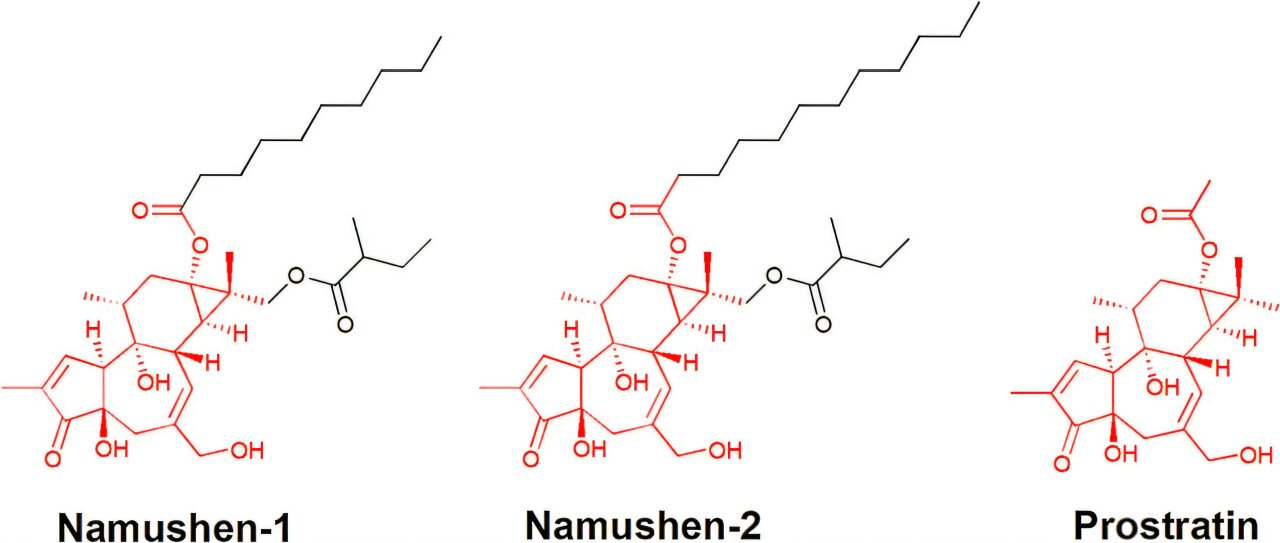A collaboration between The Wistar Institute and the University of Buea in Cameroon has uncovered the mechanisms for a medicinal plant with anti-HIV potential in Croton oligandrus Pierre & Hutch, a species of African tree that has been used in traditional healing in Cameroon to treat a variety of diseases and conditions including cancers and diabetes.
The research team—a collaboration between Fidele Ntie-Kang, Ph.D., an Associate Professor of Pharmaceutical Sciences at the University of Buea and the Director of the University of Buea Centre for Drug Discovery, and Ian Tietjen, Ph.D., Assistant Professor and Education Director of Global Studies & Partnerships at The Wistar Institute’s Hubert J.P. Schoemaker Education and Training Center—published their findings in the Journal of Experimental Pharmacology in their paper, “Croton oligandrus Pierre & Hutch (Euphorbiaceae) extracts and isolated compounds reverse HIV-1 latency.”
This research is one of several discoveries on African chemical compounds that came from the collaboration between Wistar and the University of Buea Centre for Drug Discovery, which began in 2021. In addition to helping to advance HIV cure research in Cameroon, this collaboration also provided an opportunity for lead author Chantal Emade Nkwelle to travel from Cameroon to work at Wistar for five months, learn many of Wistar’s laboratory techniques on HIV research, and transfer them back to the University of Buea.
“This work demonstrates the value of global partnerships to the search for an HIV cure,” said Luis Montaner, D.V.M., D.Phil., Wistar Executive Vice President and director of the HIV Cure and Viral Diseases Center, who leads Wistar’s HIV research efforts and served as a co-author on the paper. “An effective cure will need to reach people around the world, and by leveraging traditional African ethnomedicine, we’re making progress toward a cure with accessibility in mind.”
Even though HIV can be managed effectively throughout the world with antiretroviral therapy, or ART, the disease still doesn’t have an accessible cure. Even with lifelong ART treatment, the virus remains latent in reservoirs throughout the body that can reactivate at any time, and over the long-term, these reservoirs can contribute to chronic inflammation and comorbidities.
To address the need for HIV cure strategies in Sub-Saharan Africa, Wistar researchers joined forces with the team at The University of Buea in Cameroon to assess the activities of C. oligandrus chemical extracts on HIV latency.
“This Croton species was chosen for study because it has a long history, along with related African plants, of use in ethnomedicine. For thousands of years, people in Cameroon and neighboring countries have relied on traditional, plant-based medicine from healers to treat a variety of illnesses, from cancer to diabetes and, more recently, even HIV. Our collaboration with the Wistar Institute over and above scientific discovery has also provided us with human development capacity building,” says Dr. Ntie-Kang.
Building on work from similar species of plants used in African ethnomedicine, the research team investigated whether the medicinally active compounds in C. oligandrus could be latency-reversing agents, or LRAs, substances that reactivate latent HIV. LRAs are a critical component of HIV cure research due to their role in what is called “kick and kill,” the idea that HIV can be reawakened and actively targeted to eliminate the viral reservoir.
Discover the latest in science, tech, and space with over 100,000 subscribers who rely on Phys.org for daily insights.
Sign up for our free newsletter and get updates on breakthroughs,
innovations, and research that matter—daily or weekly.
By isolating compounds from dried powder from the plant’s bark, Drs. Tietjen, Ntie-Kang, and their teams were able to run assays designed to test whether the compounds reversed HIV latency in vitro—a hypothesis that was confirmed for four out of six isolated compounds. Notably, some of these compounds synergized—that is, achieved “greater than the sum of its parts” latency reversal—when administered with preexisting LRA compounds.
“Our work shows that there’s reason to be hopeful about C. oligandrus’s potential in aiding in the HIV cure effort,” said Dr. Tietjen, the corresponding author on the paper from Wistar. “Forcing HIV out of hiding so that researchers can kill the virus is a challenge, so identifying an LRA compound that synergizes with other LRAs to improve their strength is a victory—especially given its discovery in a part of the world where HIV cure research will make such a large impact.
“We are also demonstrating the importance and value of traditional knowledge that local healers have used for generations, so it’s vitally important to respect and support this knowledge. We look forward to learning more about how compounds from this plant can aid in the HIV cure research efforts in Cameroon and worldwide.”
The study also featured work from trainees in the Biomedical Technician Training (BTT) Program and students in the Research Experience for Undergraduates (REU), who participated in cytokine ELISA experiments as part of Wistar’s dedication to providing trainees with research-driven scientific experience.
More information:
Chantal Emade Nkwelle et al, Croton oligandrus Pierre & Hutch (Euphorbiaceae) Extracts and Isolated Compounds Reverse HIV-1 Latency, Journal of Experimental Pharmacology (2024). DOI: 10.2147/JEP.S472234
Provided by
The Wistar Institute
Citation:
Collaboration uncovers mechanisms of an African plant with anti-HIV potential (2024, November 19)
retrieved 20 November 2024
from https://phys.org/news/2024-11-collaboration-uncovers-mechanisms-african-anti.html
This document is subject to copyright. Apart from any fair dealing for the purpose of private study or research, no
part may be reproduced without the written permission. The content is provided for information purposes only.


